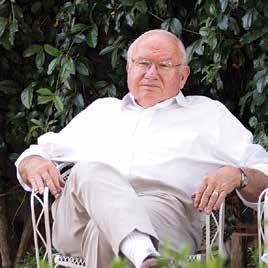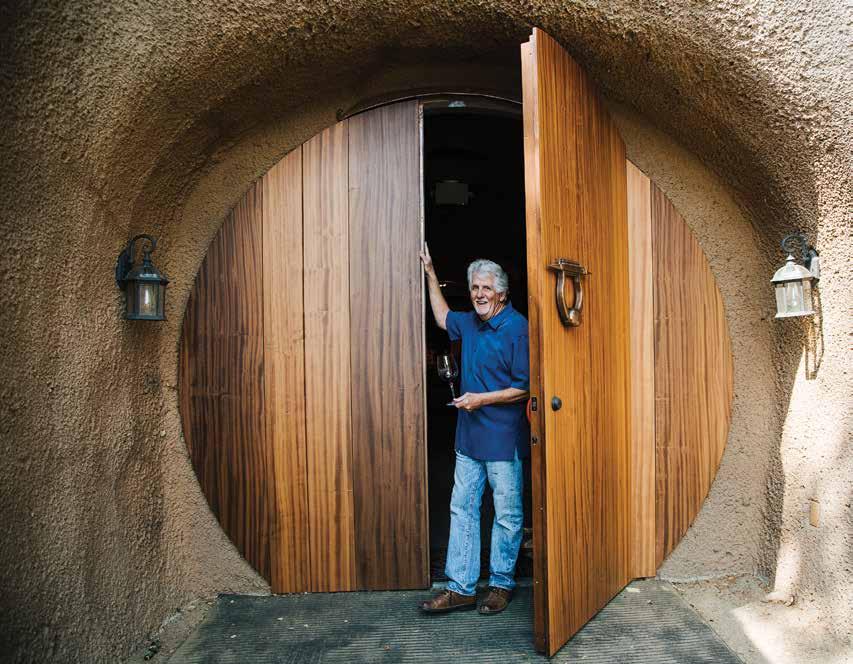
5 minute read
Navigating the World of Bubbles
Do you feel special when someone hands you a glass of bubbly wine in a pretty flute? It is festive and fun...and totally confusing when you are tasked with the job of purchasing sparkling wine for a holiday party, dinner or just because. To make your selection easier, let us look at some sparkling wine basics to enable you to buy with a measure of confidence.
First, you are asked to buy ‘Champagne’ which has become synonymous with bubbles like every facial tissue is called a ‘Kleenex’. To cull the herd of production styles of wine, we will limit this to sparkling wine crafted by the time honored ‘traditional method’ (there is also sparkling wine made by tank method Prosecco, for example and others by infusing with carbonation, but, these, in my opinion, while less expensive, can be less satisfying products).
While still wine is made by vintage (whatever the growing year gives you is what goes into the bottle), sparkling wine is made by formula. Using the traditional method of production, winemaking begins with just ripe grapes that are fermented and a base wine made from that vintage. Each sparkling house will have many iterations of base wines (varying vintages, different vineyard sites, high vs. low elevation grown fruit, different blends, etc.) and will use these to craft their house style base wine each year. This base wine is then put into their bottles (the same bottles that the sparkling wine will later be sold in) along with the tirage (sugar and yeast, yeast nutrients and a clarification agent) for the secondary fermentation. The amount of sugar added at this step depends upon the degree of effervescence required and is what creates those lovely bubbles in the glass.
The bottles are sealed with crown caps (like beer bottle caps), placed on their sides to wait for fermentation to complete, and then the winemaker chooses if the wines will age on the lees and for what length of time. For example, if Cava is being produced, a minimum of nine months is required, but more typical would be fifteen to eighteen months, at which point the effects of autolysis becomes detectable. (Autolysis is the enzymatic breakdown of dead yeast cells which adds the yeasty, bread dough, brioche, hazelnut character and a creamy texture.) The length of time depends upon the style of sparkling (fresh fruit vs. lees-aged character), but autolysis can continue for four to five years and has been known to last for as long as ten years. That certainly adds to the cost of that special bottle!
The bottles are stored on their sides and riddled which mean that they are turned toward the vertical so that the lees flocculate and eventually end up in a mass in the neck of the bottle. After the necks are cooled, the crown caps are removed and the frozen chunks of yeast are disgorged. Dosage is added (a mixture of wine and sugar) and this step will dictate the sweetness of the final wine. A cork, wire muzzle and metal capsule are then put in place.
As you can see, a ‘traditional method’ sparkling wine is not like buying a bottle of soda where the product is always the same in every production. The choices made during winemaking such as varietals used, tirage, dosage, lees ageing, and additions have a direct impact on the character of the wine.
If you are looking to purchase a ‘traditional method’ sparkling wine, here are some of the choices you will find at your favorite wine shop. • Champagne - From France and the region of
Champagne made from Chardonnay, Pinot Noir or
Meunier, the Champagne varietals (You might also find ‘California Champagne’ but it’s not from France and the allowed usage of the term is the result of an oversight when a treaty was signed years ago.) • Crémant - French sparkling wine made by the traditional method from varietals typically grown in the region of production (Alsace, Burgundy,
Loire, Bordeaux, Jura, Die, Limoux, Savoie). This can include Chenin Blanc, Cabernet Franc, etc., depending on the area.
• Cava - Spanish sparkling wine made using Macabeo, Parrallada, Xarel-lo and Chardonnay varietals. • Sparkling Wine from USA - Made in many states and from various varietals.
• Franciacorta - Italy - Made from Chardonnay and Pinot Noir varietals.
• Cap Classique - South Africa - Made from
Champagne varietals, Chenin Blanc and Pinotage. • Sparkling Wine from Tasmania - From Australia using Champagne varietals.
If you decide upon the area of Champagne (or the pretty bottle), you need to check the style. The most notable choices are:
• NV - non vintage which is sparkling made from a few vintages and represents the style of the house • Vintage - 100% from the vintage and can be house style or a unique blend • Rosé - generally a blend of red and white grapes • Blanc de Blancs - only white grapes used • Blanc de Noirs - white sparkling from red fruit with a fuller body
For French Champagne, you may also see: • Grand Cru - all grapes are within the vineyards of Grand Cru Villages • Premier Cru - all grapes from within Premier Cru
Villages • Prestige Cuvee - the producer’s top wine which can be NV or Vintage Note: be aware that ALL houses within these Cru Villages can call their Champagne a Grand or Premier Cru even if they are not a premium producer. It is simply a designation which is hooked to the village of production and not a guarantee of quality.
Finally, how dry, or sweet of a sparkling wine are you looking for? It seems that a great majority of the offerings are BRUT which means they are anywhere from zero to 12 g/L. These will taste dry to slightly off dry but not have a lot of sweetness showing, especially if the wine has spent time on the lees. In my experience, BRUT is what is most often purchased. If a bit more sweetness and roundness is desired, the EXTRA BRUT category is a step up providing 12 to 17 g/L.
If you decide upon a Crémant, you will definitely reduce the cost of the bottle and open yourself up to an interesting world of sparkling wine made from different varietals, although still French. Note that Alsace, Loire, and Burgundy are the main and most famous regions.
Hopefully, this helps you to truly appreciate and enjoy the vast world of bubbles and feel really special the next time someone hands a pretty flute!

By Claire L. Torbeck
Claire is a Certified Sommelier and a member of the Lake Tahoe Region Chapter. For more information and articles by Claire, visit Sudsy’s Cellar at www.sudsyscellar.com.










